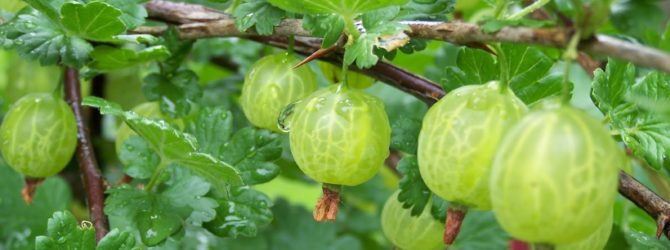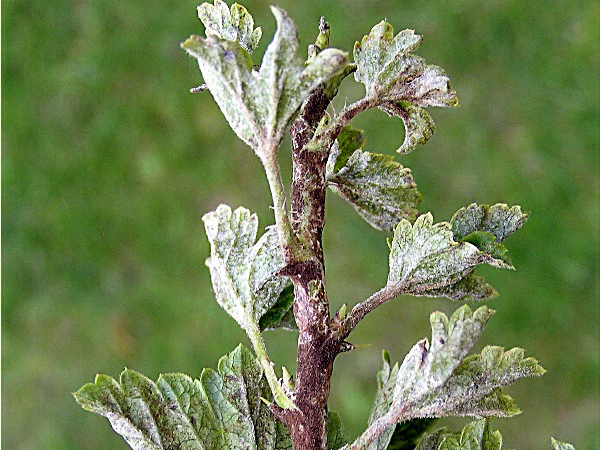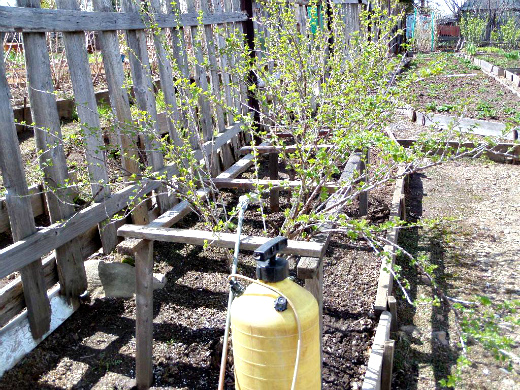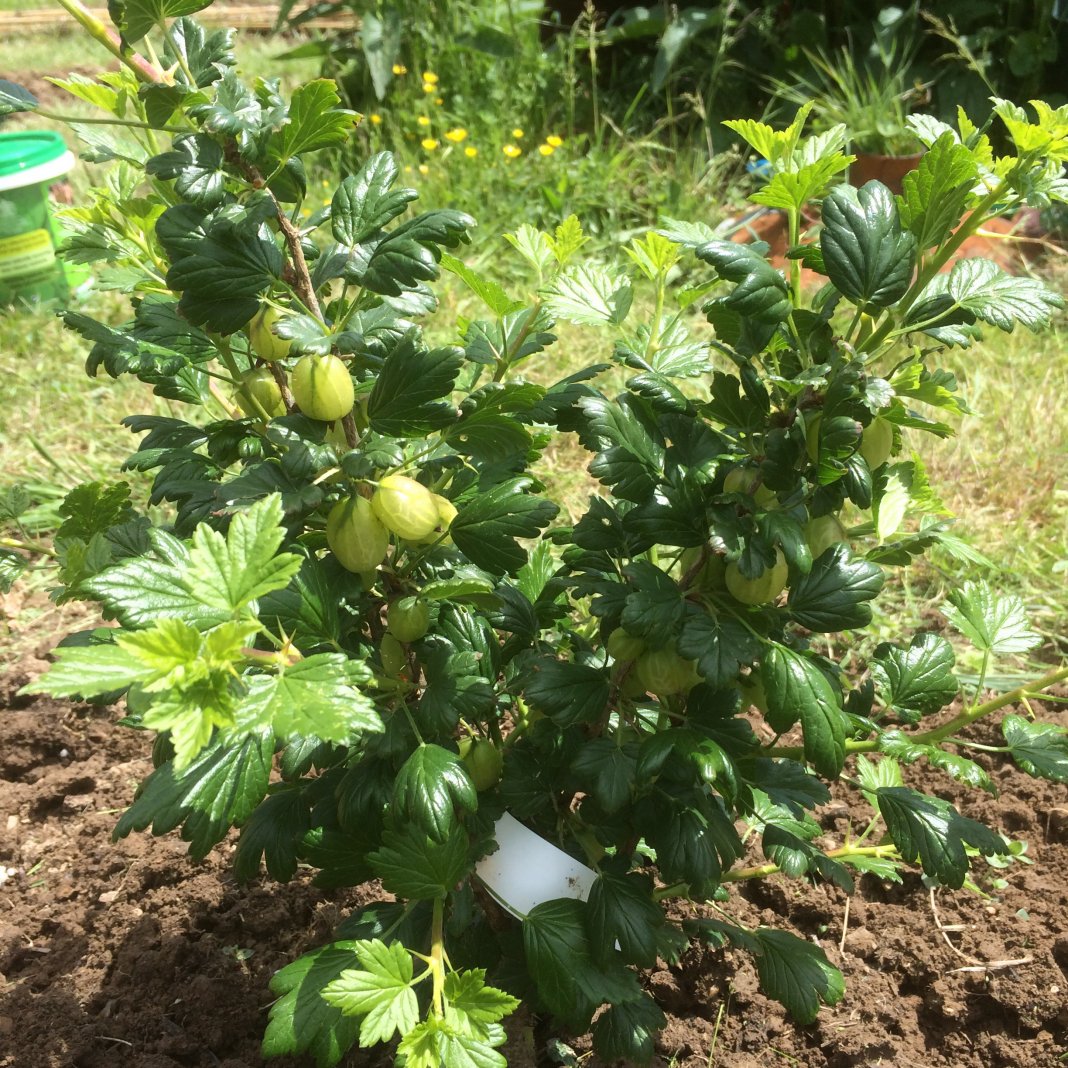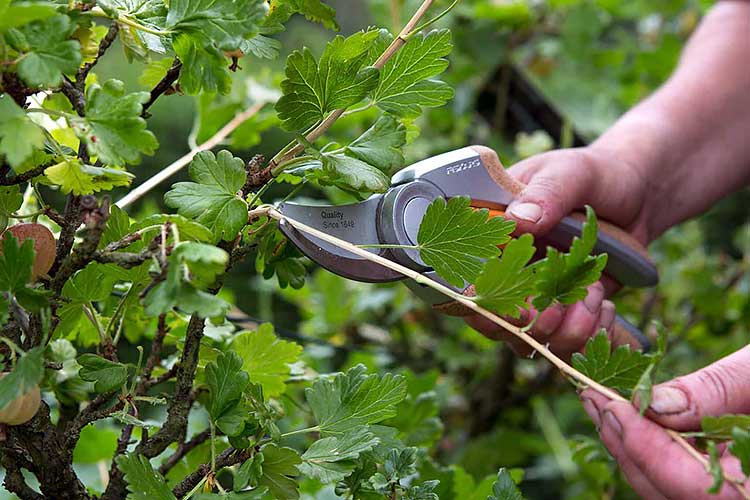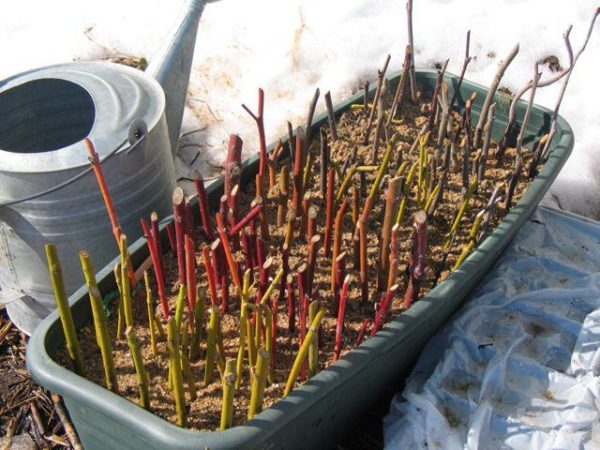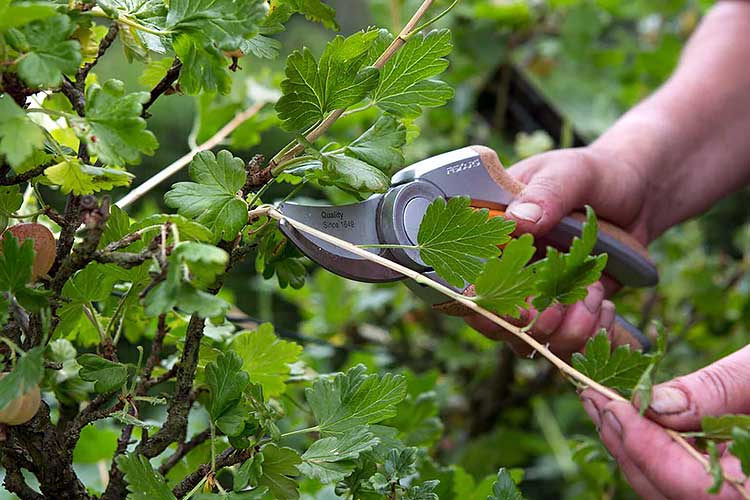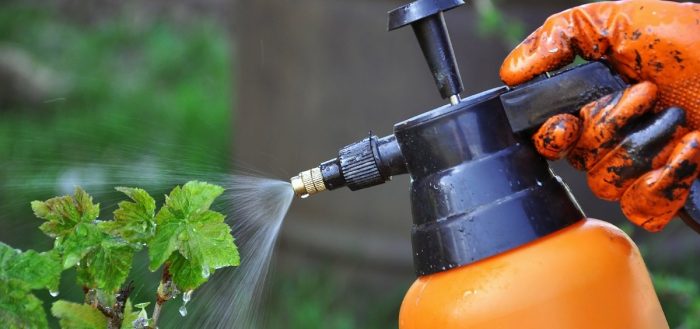Content:
Proper care of gooseberry bushes in spring consists of such activities as:
- Removing the winter shelter;
- Pruning;
- Top dressing;
- Loosening the soil;
- Mulching;
- Treatment against pests and diseases;
Late or improper implementation of one of these activities can greatly affect the growth and development of the crop during the spring-autumn season, reduce the yield and winter hardiness of the bushes.
Features of gooseberry care in spring
Removing the winter shelter
After the stable warm weather sets in, constant night frosts will stop, sacking is removed from the bushes, last year's mulch and fallen dry last year's leaves are removed. Too early or late removal of the shelter negatively affects the gooseberry bush: in the first case, the buds that have begun to swell can be damaged by night frosts, and in the second case, at high temperature and humidity inside the shelter, these same buds can begin to overheat and rot. In addition, such conditions will contribute to the development of diseases.
Pruning
After removing the shelter from the bushes, spring pruning is performed, removing the following shoots:
- damaged by frost, pests;
- very old and unproductive;
- thickening the bush;
- root growth.
Also, 4-5 of the strongest are left from last year's shoots, the rest are all removed. Pruning is done by cutting off the selected shoots at ground level.
Top dressing
BNaturally, two nitrogen fertilization of gooseberries is performed:
- The first is done in early spring after removing the cover and pruning. In the first year after planting, before the beginning of fruiting, the plantation is fed with carbamide (urea) at a dose of 30-35 g / bush or ammonium nitrate at a dose of 35-40 g / bush. In the second and subsequent years, the dose of nitrogen fertilizers for early spring feeding is increased by 50%: respectively, 45-50 g / urea bush or 50-60 g / ammonium nitrate bush are applied;
- The second - the second time they feed the gooseberries, when a steady flowering occurs. For this, organic fertilizers are used: compost, rotted manure at a dose of 5 kg / bush is evenly distributed around the plant. Also, the second feeding is often done with urea. To do this, 20 g of carbamide is dissolved in 10 liters of water and watered with this solution one bush, or the same amount of dry fertilizer is applied under each plant with the obligatory incorporation of loosening.
Watering
In dry spring, plants are additionally watered, spending 40-50 liters of water for each bush. Watering is carried out using a watering can with a splitter spout or by gently pouring water out of a bucket with a gentle stream.
Loosening
After pruning and fertilizing, the space around the bush is carefully loosened to a depth of 7-10 cm using flat cutters or an ordinary hoe. When loosening, weed shoots are removed, the applied nitrogen fertilizers are covered.
Mulching
To prevent moisture evaporation and overgrowing of the soil near the bush with weeds, it is mulched, covering it with a uniform layer of organic fertilizers such as rotted manure, peat, compost. The thickness of the mulch should be at least 5-7 cm.
Treatment against pests and diseases
Processing gooseberries in the spring against diseases and pests is a necessary protection of plants from insects and various infections and viruses that damage leaves and fruits.
In more detail about what diseases and pests damage the culture, when and how to treat gooseberries against them, will be described below.
Diseases
In the spring, gooseberries are susceptible to diseases such as:
- Powdery mildew;
- Anthracnose;
- Septoriasis;
- Rust;
- Mosaic.
Powdery mildew
Symptoms of the disease
Mealy white bloom on leaves and shoots, which can be easily erased with your fingers at the initial stages, and later turns into a dense brown felt layer. Over time, the emerging berry is also covered with bloom.
As a result of the defeat of the disease, the leaves become fragile and small, the shoots dry up, the fruits do not develop and fall off.
Fighting the disease
- Pruning and burning damaged shoots at the very beginning of the development of the disease;
- Pouring boiling water over a bush - many gardeners still doubt whether it is possible to water a gooseberry with boiling water without harming the plant. You can pour boiling water over the bushes to combat powdery mildew, but you must be careful. With this method of destroying the infection, boiling water is distributed over the foliage and shoots using a hand sprayer with a tank resistant to high water temperatures. In no case should you pour the bushes from a bucket - a hot stream of water will damage the shoots and young buds. It is recommended to boil water for such irrigation: the higher its temperature, the higher the probability of destroying pathogens;
- Spraying the bushes with an infusion of wood ash (300 grams of ash per 10-12 liters of water);
- Spraying with such preparations as "Topaz", "Oxyhom", iron vitriol in doses, according to the instructions for use attached to the preparations.
Backpack sprayers should be used for spraying. Do not spray pesticides on the gooseberry bushes with an ordinary broom - with this method of application, the effectiveness of pesticides decreases. This also increases the risk of poisoning the person performing the treatment with randomly flying drops of the pesticide working solution. The best processing time is early morning or late evening
Anthracnose
Symptoms of the disease
Small dark spots with vague edges appear on young foliage. Over time, they grow and cover the entire leaf area, thereby reducing its photosynthetic ability and leading to premature drying and dropping.
Fighting the disease
- Collection and removal of fallen leaves in autumn and early spring. All collected leaves are immediately burned;
- Spraying the bushes before bud break with a solution of such a drug as copper sulfate (50 grams per 10 liters of water) with a working fluid consumption of 1.5 liters per 1 bush;
- Spraying before flowering with 1% Bordeaux liquid.
Septoriasis
Symptoms of the disease
A large number of ash-white round spots with dark edging appear on the leaves.As the disease progresses, black dots appear on the spots containing spores of the pathogen. The affected leaves begin to curl, dry out prematurely and fall off.
Fighting the disease
- Cleaning and burning of fallen leaves in autumn and early spring;
- Timely pruning;
- Loosening and mulching of the soil in order to destroy pathogens living on the soil and plant debris;
- Treatment of affected bushes with drugs such as Topaz, Fundazol.
Rust
Symptoms of the disease
Orange spots appear on the leaves and fruits with spores of the parasitic pathogenic fungus located inside. As the disease progresses, the stains take on the shape of a glass, due to which this disease is called goblet rust.
Fighting the disease
- Planting bushes in high and not wetlands;
- Cultivation of varieties resistant to the pathogen;
- Timely feeding and pruning for faster growth and development of gooseberries, increasing its resistance to disease;
- The destruction of weeds, on which the causative agent of the disease often develops before the gooseberry bush is infected;
- Collecting and burning fallen leaves in autumn and spring;
- Treatment of gooseberry bushes in the spring with preparations such as Topaz, Fundazol, Bayleton.
Mosaic
Symptoms of the disease
This viral disease manifests itself as a "mosaic" pattern of bright yellow patches on the leaf along the veins. The affected leaves stop growing, become small, wrinkled, and gradually turn yellow.
Fighting the disease
- Purchase of healthy seedlings from nurseries and specialized stores;
- Fight against sucking pests that are carriers of the disease: treatment of bushes with insecticides, removal of weeds;
- It is impossible to fight this viral disease, the affected bushes are immediately dug up and burned.
Pests
Among the pests, the following crops are affected in the early spring period of its growth and development:
- Spider mite;
- Sawfly;
- Fire Flame;
- Moth;
- Shoot aphid.
Spider mite
The nature of the damage
The pest settles on the underside of the leaf blade, entangles it with a thin cobweb. The tick itself feeds by sucking the juices from the leaves, after which it also lays eggs on them. Affected leaves gradually turn yellow, dry out and fall off prematurely.
The mite is highly fertile - up to 8 generations of the pest can develop per season.
Control measures removal and burning of fallen leaves;
· Loosening and mulching of the soil;
- Spraying affected bushes with such acaricides as "Antio"; "Vofatox"; Zolon, colloidal sulfur;
- Spraying with folk remedies: infusions of tobacco leaves, wormwood, onion husks.
Sawfly
The nature of the damage
Adults hibernate in dense cocoons in the soil under the bushes, flying out in spring and laying eggs on leaves. The main harm is caused by the sawfly larva - a caterpillar, eating tender young leaves, leaving only veins and petioles.
Control measures
- Loosening and mulching the soil under the bushes;
- Manual assembly and destruction of tracks;
- Spraying the affected bushes with such insecticides as "Kinmiks", "Fufanon-Nova", "Inta-Ts-M";
- Used for the destruction of larvae and such bacterial preparations as "Bitoxibacillin", "Lepidocide".
Fire
The nature of the damage
This pest damages not only gooseberries, but also currants. Butterflies emerging from cocoons wintering in the soil under the bushes fly out in early spring and lay their eggs inside the flowers that begin to bloom.
The larvae developing inside the fruit eat up the passages in the berries, cause them to rot and prematurely fall off.
Control measures
- Loosening and mulching the soil under the bushes;
- Collection and destruction of fallen berries with larvae;
- Treatment of bushes with such insecticides as "Kinimiks", "Iskra", "Karate"; bacterial preparations "Bitoxibacillin" and "Lepidocide".
Moth
The nature of the damage
Pest cocoons hibernate in soil and plant debris under bushes. The butterfly that appears in spring lays its eggs on the underside of the leaf blade. The moth larva emerging from the egg devours the leaves, leaving only veins and petioles. There can be up to 2 generations of caterpillars per season.
Control measures
- Loosening and mulching the soil under the bushes;
- Collection and burning of fallen leaves;
- Treatment of affected bushes with insecticides "Bromofos", "Karbofos", "Inta-vira"; bacterial preparation "Bitoxibacillin".
Aphid
The nature of the damage
Small larvae and winged individuals settle on the petioles of young leaves and shoots, feed on their juices. Affected leaves develop slowly, often curl, dry out.
Control measures
- Removal and burning of affected shoots;
- Watering the bushes with boiling water - while the bushes can not only be poured with boiling water, but with a small lesion, gently sprinkle them;
- Treatment of bushes with insecticides such as "Fufanon", "Aktara", "Bi-58", "Aktelik", "Inta-Vir".
The fight against diseases and pests that gooseberries are susceptible to is a very important component of its cultivation technology. Without these measures, the crop can not only significantly reduce the yield, but also die.
